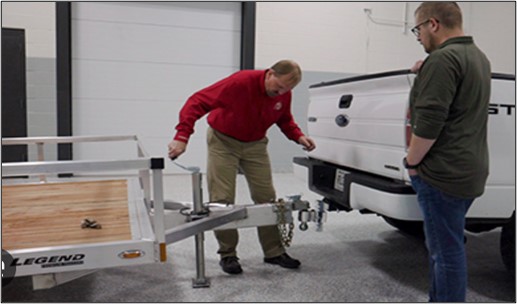How do Employers Assess 'Skills' in the Workplace
By Jason Shepherdson, Health & Safety Consultant
30-10-2023
It’s accepted that employers want a safe, healthy, and skilled workforce, but where does the obligation start and finish when it comes to training and skills?
Start with a Risk Assessment (Training Needs Analysis) – identify the tasks that are required of a role, identify which of those tasks carry risk, and what training is required.
Health & Safety at Work Act 2015
The Health & Safety at Work Act (HSWA) 2015 states that a worker must be Trained, Qualified, Competent or Supervised*
*Note: If you are relying on the use of supervision, then the same requirements apply to the supervisor. How are they deemed competent? What level of supervision is required?
Qualification vs Competent
A Forklift Operator with a valid (in date) forklift operator certificate is qualified to operate a forklift, BUT they may not be competent in all forklift operations. The employer should consider what operations they are competent to conduct and identify any operation that they require further assessment / supervision.
In Practice
If you’re employing a worker and their role involves driving a company vehicle, it’s generally accepted that their valid driving licence is sufficient to demonstrate competence in driving. However, if a driving task includes the use of a trailer, that same licence does not necessarily demonstrate an equal level of competence. The same would go for ‘securing a load’ to the trailer. How has the employer assessed that the worker has those additional skills?
Recent Incidents
Several recent incidents have occurred where workers operating trailers have incorrectly attached trailers to vehicles, resulting in the trailers detaching and colliding with oncoming traffic. This has tragically caused the fatality of other road users.
When investigating, it was identified that the workers had not received any training relating to use of trailers. It was also identified in one such incident, that two workers thought that the other worker had attached / secured the trailer, when in reality neither of them had.
Types of Training
Most workers respond best to practical / visual types of training eg. a complete demonstration of a task, with the ability to then practice / imitate (whilst still under supervision).
Example:
Attaching a trailer to a vehicle
o Most drivers have never formally been trained or even shown how to attach a trailer to a vehicle.
o Many businesses operate fleets of company vehicles and trailers with an expectation the worker will know how to perform the task safely.
o Failure to understand the difference between tow ball sizes and trailer hitches, safety latches, clips, safety chains (single vs double).
Remember an employer is responsible for setting clear expectations:
o An example of this is where an employer states a trailer has a maximum load and directs that the driver must not exceed the maximum load. How does the driver know what the maximum load is?
o Imagine a driver moving bee hives – what does two tonne of hives look like? Does the driver have an ability to know the weight of the hives? Employers should be clear with instructions e.g., Only carry a maximum of 40 hives. (this is much more easily controlled / assessed by the driver).
Practical training can be supported with some theory training:
o The introduction of Standard Operating Procedures (SOP) or Safe Work Practices (SWP) as part of the Worker Induction.
o Step-by-step guides or a list of Do’s and Do Not’s (ideally supported with a few simple photos).
o Worker training assessments at the start of employment (recorded). These could be reviewed annually.
o Workers can read and sign that they have read and understood the business procedures.
Assess the risks of a task to be performed DO NOT assume knowledge, especially where high risks are involved.
WorkSafe New Zealand Releases Workplace Safety Strategy
Published 16/10/2024
WorkSafe New Zealand released its refreshed strategy in August 2024, outlining a compreh...
Continue ReadingRestructuring and Redundancy
Published 30/09/2024
With New Zealand in the midst of economic turmoil, many employers may be in a situation ...
Continue ReadingConfessions of an HR Consultant
Published 01/08/2024
In conversations with clients regarding employment relations matters, our team is often ...
Continue Reading